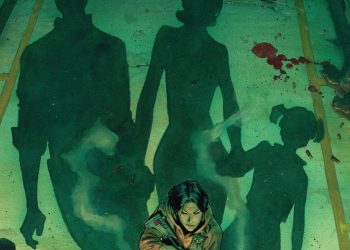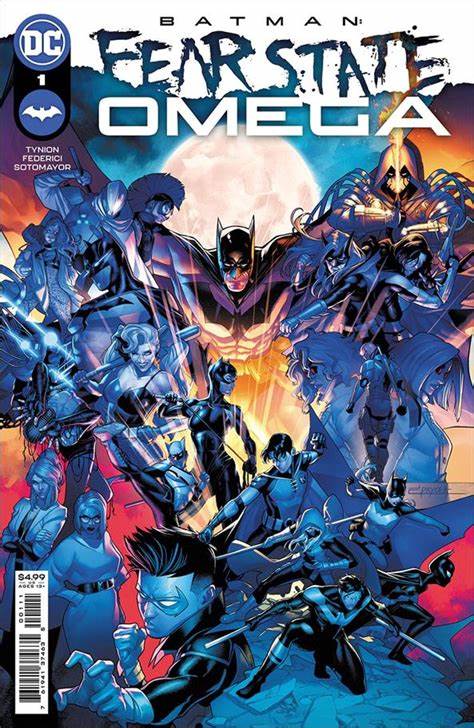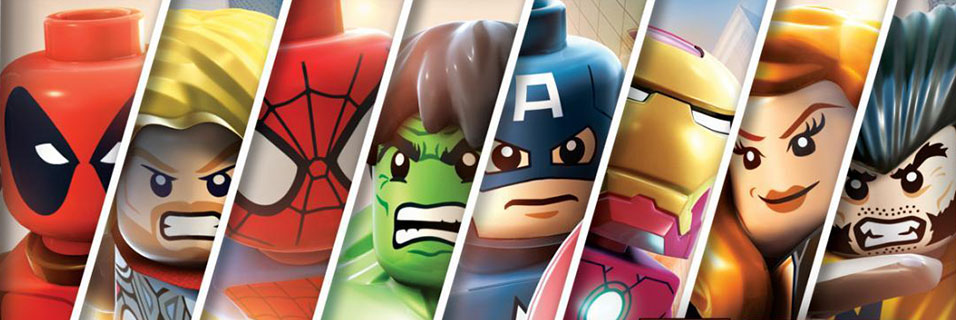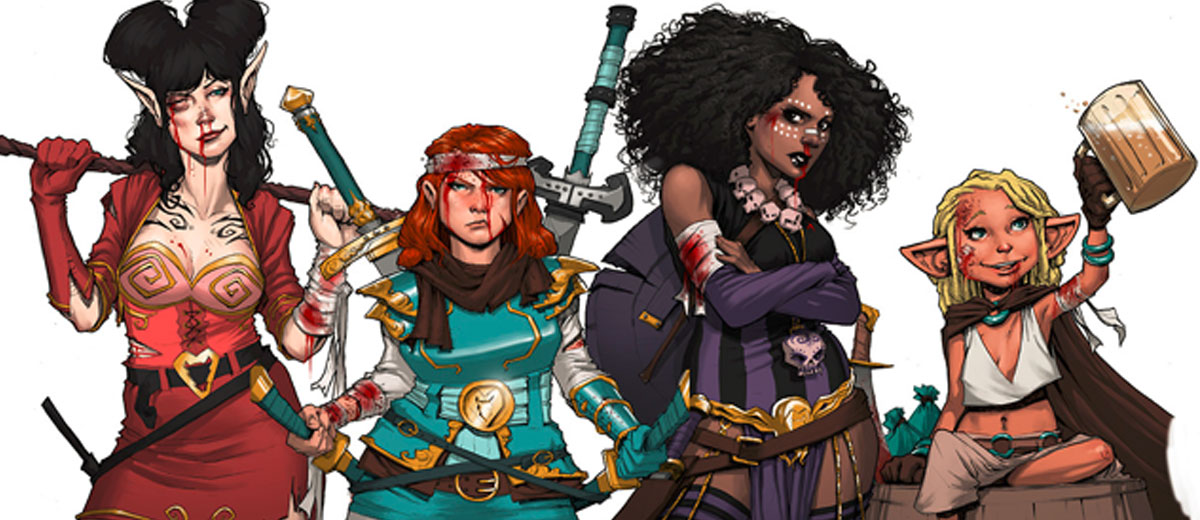It’s impossible to truly state how important the Fantastic Four have been to the comic’s medium. Not only was it the dawn of the Marvel Age of comics it also restored superheroes to their rightful place in the pantheon of comics. Although the “general wisdom” says that the Silver Age of Comics began with the publication of Showcase #4 in 1956 that introduced the Barry Allen version of The Flash, a great case could be made that it only truly kicked off with the first issue of The Fantastic Four in 1961, and since then the first family of comics has been a staple on the comic shelves as it has defined and redefined the comic genre. That is until Secret Wars and the bitter feud between Marvel Comics and 20thCentury Fox saw the end of an era. As the Marvel universe ‘rebooted’ noticeably absent was the Fantastic Four. The Human Torch and the Thing were present but were scattered across the galaxy (literally in the case of the Thing) but the Invisible Woman, Mr. Fantastic, Franklin, Valeria, and the rest of the Future Foundation were missing. Since then an attempted franchise film bombed….BOMBED…. and with a potential Disney acquisition of 20thCentury Fox on the horizon and cooler heads within the House of Ideas prevailing we are soon on the cusp of a return of Marvel’s first Family as Dan Slott and Sara Pichelli will relaunch the title this August.

I’ve been reading comics since 1979 and in that time I’ve read a lot of Fantastic Four comics but the only consistent time I did was the John Byrne era since Byrne was my favorite artist for a very long time. I read major issues and arcs over time and checked in and checked out over the years but I never read the Fantastic Four like I should have read the Fantastic Four so I decided to remedy that. To accomplish this I knew what had to be done and who I needed to reach out to, the heart and soul of Talking Comics and a man I have grown to respect over the years and am happy to call my friend, Bob Reyer. For anyone who knows Bob or have ever listened to him you know that the Fantastic Four holds a special place in his heart. So I sent him an idea, a maybe impossible idea. I asked him to pick the best of the FF for me to read.
*Note: Bob went absolutely above and beyond of what I asked and I could not let his beautiful tribute to the World’s Greatest Comic Magazine go to waste so I will make note when it is Bob’s writing
Bob-
My friend John has asked me to set him on a task (and what to me would be a pleasurable one!), as what with the coming relaunch of The Fantastic Four, he’s requested that I select a few books or runs that would define in no uncertain terms why The FF is “The World’s Greatest Comic Magazine” as was emblazoned on the cover for so many years. The thing of it is (and no pun intended!) that it’s a nearly impossible task for me, as I could make a list hundreds of issues long and still feel that I’d left something out! Still, how can I resist talking about my favorite series of all-time, right?

To start off, my best “big picture” advice for anyone would be to read the entirety of the 102-issue Stan Lee/Jack Kirby run, as nearly everything that made Marvel Comics “Marvel” was first set down within those pages. After that, the five-or-so years in the early Eighties by writer/artist John Byrne from #232 through #293 both paid loving homage to those issues, but at the same time brought the book into the modern era without losing the core values of what Stan and Jack had put in place. Of more recent vintage, Mark Waid and the late Mike Wieringo did something similar to Mr. Byrne in their run beginning with issue #60 (actually #489), Jonathan Hickman created a three-year epic that quite honestly needs to be read as a whole to get the most out of it (although I will pick out one issue in particular), and I love what Matt Fraction did to follow him, promising (well, Reed did) “less action, more adventure” and delivering something amazing in not only his Fantastic Four, but also the charmingly quirky sister book, FF.
Okay, all that said, here are some selected single issues and shorter arcs that will hopefully show you why after 56 years nothing has caused me to waver regarding my love for the Richards’ extended family!
In the very early days, Stan Lee and Jack Kirby were simply trying everything–and they all worked! For all intents and purposes, issues #36 through #67 have many threads that connect them into a larger narrative, although not in the way that today’s “events” are done. Within those tales were introduced Medusa and the Inhumans, Galactus, Silver Surfer, Black Panther, The Kree, and “Him”, eventually to become Adam Warlock. Here are some special highlights from the Lee/Kirby run, which to many experts (and your Cranky Old Uncle Bob!) is the greatest run by any two creators on any comic–EVER!!
I was thankful when Bob agreed to indulge me in my what became a daunting task as I took the man at his word and loaded up my Marvel Unlimited with an enormous amount of Fantastic Four. There was no better place to begin then at the beginning, with Fantastic Four #1 and the foundation of the Marvel Universe. So I began by reading the entire Lee/Kirby run, all 102 issues plus 6 Annuals and consider my mind blown. Digging into the early issues it became apparent that what the Fantastic Four has become was not what was intended. It truly read like a comic where the creators had full freedom and they were just spawning wild idea after wild idea and saw what worked and just continued from there. Then something happened, Lee and Kirby realized that they were onto something and they began to build a universe, a glorious universe that I doubt they even could imagine what it would become today. Something else became apparent the deeper I got into the first year of the series; Lee and Kirby were having fun.
Fantastic Four #1 was a fun issue but it really just set the stage. A quick origin story, a page set aside for each character to be introduced and then onto the Mole Man. No iconic uniform’s but very much a family dynamic is forming. But the next few issues really create the motif of what the Fantastic Four will be.
Bob-
Fantastic Four #4 through #6: #4 reintroduces the Sub-Mariner, #5 is the first Dr. Doom, and they team up in #6 to take on the FF…and take The Baxter Building into space!

Bob’s dead on here, as he usually is. I really felt the Fantastic Four vibe emerging in these three issues. A few things jumped out to me, one is the amount of content that Lee and Kirby fit into an issue. I’ve been reading decompressed storytelling for so many years that I had to adjust my mindset to take in all of the brilliance. Another thing was that bringing Namor, the Sub Mariner back was such a nice nod to the earlier Timely years and Namor is the first Marvel Anti-Hero, well before the likes of the Punisher and Wolverine. Finally Doctor Doom is one of the most flushed out villains in comics at the time. His backstory is compelling and tragic while his ego is unchecked and his greatest flaw. It’s in these early issues that Lee and Kirby realized they were onto something. They could tell a long form story and they could literally make their heroes face the impossible and make it seem like an ordinary day.
Bob-
Fantastic Four #12, Fantastic Four #25–#26: In #12, the FF meet the Hulk for the first time, and in #25 and #26 he engages in an issue-long battle with the Thing, and then “The Avengers Take Over!”

A birth of a shared universe. It took DC 14 years before they had Batman and Superman share an actual story. Marvel started from the beginning and it was in these early stories that it all started to come together. But how things have changed. Especially the Hulk, the evolution of that character is fascinating as what he is here in these early stories is a far cry from what he is today but we do get our first Thing vs. Hulk throw down and those are always a delight plus we get to see the difference between the Avengers (a team) and the Fantastic Four (a family). This Family aspect becomes even more apparent as the series goes on….
Bob-
Fantastic Four #31 and #32: The FF are more than a team, they’re a family, and across these two issues, that truly comes into play. (Ask me some day, I’ll show you my pitch for an FF movie trilogy that uses these issues as the core!)
The first family of Marvel Comics. This is a term that has been attributed to the Fantastic Four and as I’ve mentioned before the FF really has evolved into a family and these two issues really bring it to light as Sue is kidnapped by the Mole Man and the rest of the Fantastic Four rally to save her. Sue and Johnny’s dad also returns to their lives, briefly, and Lee really drives home that these four will do anything for each other which then leads into #32. I will say one thing about these early issues of the Fantastic Four, Lee and Kirby are just cruel to Ben sometimes. I know it has paid off with one of the most fully developed characters in all of comics but it seemed like every other issue Reed would find a cure for Ben and he would shift briefly to his human form before turning back into the Thing. I know that subconsciously Ben wants to be the Thing but that really doesn’t play out for years. #32 really delves into Ben and his hope for a cure that once again proves fruitless. It’s a solid two issues and really starts what becomes a true long form story as it seems that each issue bleeds into the next and the majority of the remainder of the Lee/Kirby era is one grand story.
Bob-
Fantastic Four #38–#40: The Frightful Four (Wizard, Sandman, Medusa, Trapster) ambush The FF, and their bomb takes away their powers! Back home, can even Daredevil help the team win “The Battle of the Baxter Building” once Dr. Doom discovers their plight? (The emotional ending of issue #40 sets up the “Inhuman Saga”, just sayin’.)
I love the Inhumans but it’s such a trip to see their evolution from these early days. These early stories were an interesting re-read since, especially seeing Medusa introduced as a villain since her future is anything but being a member of the Frightful Four. These three issues are fun but truly just a precursor to the Inhuman Saga, which occupies a good chunk of the next thirty issues. The core concept of the Inhumans is here and their trust of the Fantastic Four is compelling and I truly enjoyed Johnny and Crystal’s relationship and how it evolved over the next sixty plus issues. Kirby’s at his best when he’s drawing larger than life technology and weird creatures and both of those are present throughout the Inhuman Saga but to enjoy those tales you have to begin with the Frightful Four- The Wizard, the Trapster, the Sandman, and Lady Medusa as they take it upon themselves to steal all the rich technology of the Baxter Building. We get a Daredevil appearance and the interconnected Marvel Universe continues to grow.

Bob-
Fantastic Four #48–#50: “The Galactus Trilogy”, so to quote Stan–“Nuff said!”
There is so much in these two and a half issues (the first part of #48 wraps up the Inhuman Saga) that today this would probably comprise a maxi-series of prestige format expanded event but Lee and Kirby were able to create a being (I tend not to lump Galactus in with villains, I see him more as a force of nature) that had the gravitas to make the reader feel that he truly could end the earth. Joining Galactus is his herald the Silver Surfer, who will become a reoccurring ally and foe going forward. The Watcher also makes an appearance, which always amplified the threat in a Marvel book and the tradition of the Watcher breaking his vow of non-intervention begins here.

I also enjoyed the introduction of the Silver Surfer, a concept that could have really become a silly punch line or a dated concept but in the hands of Stan Lee, Jack Kirby, and later John Buscema has become iconic. These early stories really became about the Surfer and his exile to earth after he turned on Galactus. The fish out of water story of the Silver Surfer, just like the Inhumans, will become a common occurrence in the Fantastic Four for years to come.
I’d also be remiss if I didn’t mention Galactus himself. As I stated earlier how Lee and Kirby were throwing ideas against a wall and seeing what stuck is present here. Galactus’ appearance morphs over the course of this story as we don’t get his iconic purple motif until the third issue and even then he is still colored as wearing shorts, which looks ridiculous on a giant humanoid but it was the sixties, who am I to judge. Galactus has always been a galactic threat and his hunger and mentality are present in this early story and really sets the standard for the character. A great story that really set the standard for FF issues going forward.
Bob-
Fantastic Four #51 “This Man, This Monster”,: Perhaps the finest single issue in this book’s long history.

This Man, This Monster is a near perfect story. I feel really bad for Ben throughout most of this run but this issue brought tears to my eyes. Ben is once again granted his humanity as a man (Ricardo Jones, a man with a hatred for Reed) who grants him shelter in a rainstorm drains his powers and becomes the Thing granting Ben his humanity. Posing as the Thing the impostor goes to the Baxter Building for his revenge. Ben warms the FF but is dismissed. This is where the story got me; Reed uses a new device to travel to the Negative Zone and needs the Thing to be his tether. Ben decides that since he is now human he can finally propose to his longtime girlfriend Alicia Masters. Back at the Baxter Building the tether breaks and the impostor has a change of heart when he sees that Reed is an altruistic man. So he jumps into the Negative Zone and hurls Reed to safety as he sacrifices himself. Then as Ben reaches Alicia’s door he reverts to the Thing and flees before Alicia can answer the door. When Reed sees that Ben is still alive they piece it all together and realize that Ricardo sacrificed himself in a true act of nobility. This Man, This Monster may be the finest single issue ever produced and it stood out as a true gem from the Lee/Kirby run.
Bob-
Fantastic Four #57–#60: Dr. Doom steals the Power Cosmic from the Silver Surfer and takes over the world!

Doctor Doom and the Silver Surfer together equals a magnificent read. Still trapped on earth, exiled by his former master Galactus the Silver Surfer is duped by Doctor Doom into giving up the Power Cosmic, which Doom then uses to take over the world. You would have thought the FF would have warned Silver Surfer about Doom, considering he’s exiled on earth due to his saving everyone on the planet. Another great three issue story, which tended to be the norm during this run.
Bob-
Fantastic Four #84–87: The FF are held captive in Latveria in an arc inspired by the British TV series “The Prisoner”.
Maybe we should have been calling the book the Fantastic Five by this point since Sue was on maternity leave and Crystal had taken her place in the field. Also, maybe the Fantastic Four should just avoid Latveria all together. Sent by Nick Fury to investigate the disappearance of a S.H.I.E.L.D agent the team (minus Sue, she later rejoins the team after saving them from a trap laid by Doom) are captured and brainwashed into thinking they are powerless. Over the course of the four issues the team must overcome their brainwashing, instigate a revolution, confront Doom and his henchmen and just as they are about to lose Doom grows bored and sends them home. As I stated earlier I love how compelling Lee and Kirby made Doctor Doom and this four issue story only deepens the character and shows what truly makes Doom tick. A great story that shows Lee and Kirby at the zenith of their time on the book.
Bob-
Also, the early Annuals are amazing, beginning with #1 in 1963 where Namor invades the surface world, #2 is Doom’s origin, #3 is Sue & Reed’s wedding, #4 brought back the android Human Torch, and Franklin is born in #6!
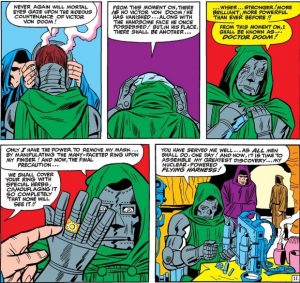
I used to love annuals. Some of my favorite comics are Annuals- Avengers Annual #10 and the Uncanny X-Men Annual #9 are two that come to mind. Annuals used to be awesome and they are sometime still awesome today.Batman Annual #2 from last year was one of the best comics put out in 2017 and this year’s Aquaman and Flash annuals were enjoyable tales since they simply told good stories with solid artwork. Somewhere in the late ‘80s and then the ‘90s Annuals had to be part of some bigger tale and they lost some of their luster. The Fantastic Four Annuals mattered. The expanded the monthly title and were what annuals should be, a great story that is a bonus to the monthly title and the first 6 FF annuals delivered just that. Fantastic Four Annual #2 was my personal favorite. Doctor Doom may be one if not the most well rounded villains in all of comics and his backstory is finally explored in this beautiful annual.

Sadly the Lee & Kirby run had to come to an end. Overall it is one of the greatest achievements in all of comic books. Of course there are things that are dated, not just vernacular but also cultural norms, such as Reed in the waiting room for the birth of Franklin or the Red Scare of communism but for the most part the Lee/Kirby era of the Fantastic Four holds up well and where other books of the time were one and done the Fantastic Four was really one long form story with multiple sub-arcs, which in my opinion was story telling well ahead of its time. You also truly witness the growing greatness of these two icons, especially Jack Kirby. The progression of Jack Kirby art was simply astounding. Over the course of these combined 108 issues his excellence blossomed right before the readers eyes. He was an incredible artist when the series started but he was a master of the comic form when he walked away. I think it also should be mentioned that Kirby’s artwork never looked better on the Fantastic Four then when Joe Sinnott took over the inking duties. Sinnott is a great artist in his own right but his inks on Kirby’s pencil were a perfect combination. Lee’s writing and plots grew over time and I can only imagine the Marvel Bullpen in this day with Stan jumping on desks and acting out his tales while Jack frantically sketched to capture his partners enthusiasm and then unleashed his own unbridled imagination on the pages of the Fantastic Four. Lee and Kirby went there separate ways after the Fantastic Four. Lee became a fountain of ideas and was prolific in his plots and development of the Marvel Universe while Kirby went on to be the sole creator on many a comic but it is fair to say that neither Jack nor Stan were at there best without the other and when these two men were motivated to change comics and in doing so created the Marvel Universe and it was clear that the creation of that Universe was set squarely in the Fantastic Four.
Next: The Byrne Era




